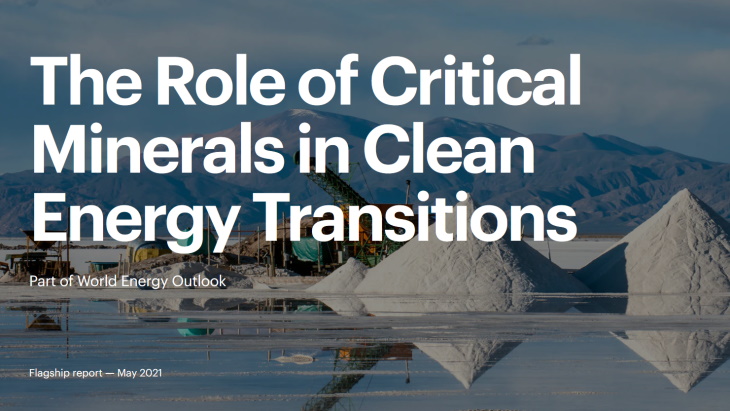The types of mineral resources used vary by technology, the report notes. Lithium, nickel, cobalt, manganese and graphite are crucial to battery technology. Rare earth elements are essential for permanent magnets in wind turbines and electric vehicle motors, while copper is a "cornerstone" for all electricity-related technologies.
If the world is to reach net zero by 2050, overall demand for critical minerals will increase by a factor of six, IEA Executive Director Fatih Birol said. "The question is whether or not this can be met by production - our analysis shows there is a looming mismatch between the world's climate ambitions and the availability of critical minerals to realise those ambitions. This worries us."
Many of the technologies the world will need to reach net zero require significantly more critical minerals than their fossil-fuel counterparts, Tim Gould, head of IEA's Division for Energy Supply, Outlooks and Investment, said. "A typical electric car requires six times the mineral inputs of a conventional vehicle, and an offshore wind plant requires 13 times more mineral resources than a similary sized gas-fired plant."
Over the last 10 years, as renewables have started to dominate investment in new sources of power generation, the average amount of minerals needed for an additional unit of power generation capacity has increased by 50%, Gould said.
Nuclear needs
The report assesses the mineral requirements for a range of clean energy technologies, including renewable energy, nuclear power, electricity networks, electric vehicles, battery storage and hydrogen.
Nuclear has limited implications for minerals thanks to its low material intensity, the report finds, and along with hydropower it is one of the low-carbon technologies with the lowest mineral intensity. The report estimates nuclear's key mineral needs, based on data from the European Commission Joint Research Centre, to include chromium (2190 kg per MW), copper (1470 kg/MW), nickel (1300 kg/MW), hafnium (0.5 kg/MW) and yttrium (0.5 kg/MW).
Uranium is not included within the scope of the analysis, as the IEA report focuses on mineral requirements for production of equipment, and not for operations.
The assessment is based on mineral requirements for light-water reactor technology, although mineral intensities could be different for small modular reactors or more advanced nuclear technologies, it notes.
Affordability and availability
Debates around energy security have traditionally focused on oil and natural gas supplies - and more recently on electricity, the IEA said, but as energy transitions gather pace, policymakers need to expand their horizons to include new potential risks. Although key minerals help reduce emissions, their extraction and processing often has environmental and social implications. Production of some critical minerals are also concentrated in a small number of countries, making their supply potentially vulnerable to disruption.
"Left unaddressed, these potential vulnerabilities could make global progress towards a clean energy future slower and more costly - and therefore hamper international efforts to tackle climate change," Birol said. "This is what energy security looks like in the 21st century, and the IEA is fully committed to helping governments ensure that these hazards don’t derail the global drive to accelerate energy transitions."
The world has more than enough mineral resources to make transitions work, but that is not a guarantee that supplies will be readily and affordably available where and when they are needed, Gould said. "A key message from this analysis is that, whatever your perspective on the energy sector, or on energy transitions, pay attention to critical minerals," he added.
The IEA makes six recommendations for a new, comprehensive approach to mineral security. These are: ensure adequate investment in diversified sources of new supply; promote technology innovation at all points along the value chain; scale up recycling; enhance supply chain resilience and market transparency; "mainstream" higher environmental, social and governance standards; and strengthen international collaboration between producers and consumers.
The world has sufficient deposits of critical minerals to meet growing demand, but ensuring the flows of capital to support production remains "the big question mark", Birol said. "Investors have not yet been convinced" by governmental pledges to reduce emissions. "If they get, from governments, unmistakeable signals that clean energy technologies are the technologies of tomorrow, then investment will flow … and we will see critical minerals production grow," he said.





_18570.jpg)
_16159.jpg)
_49205.jpg)
_18938.jpg)





